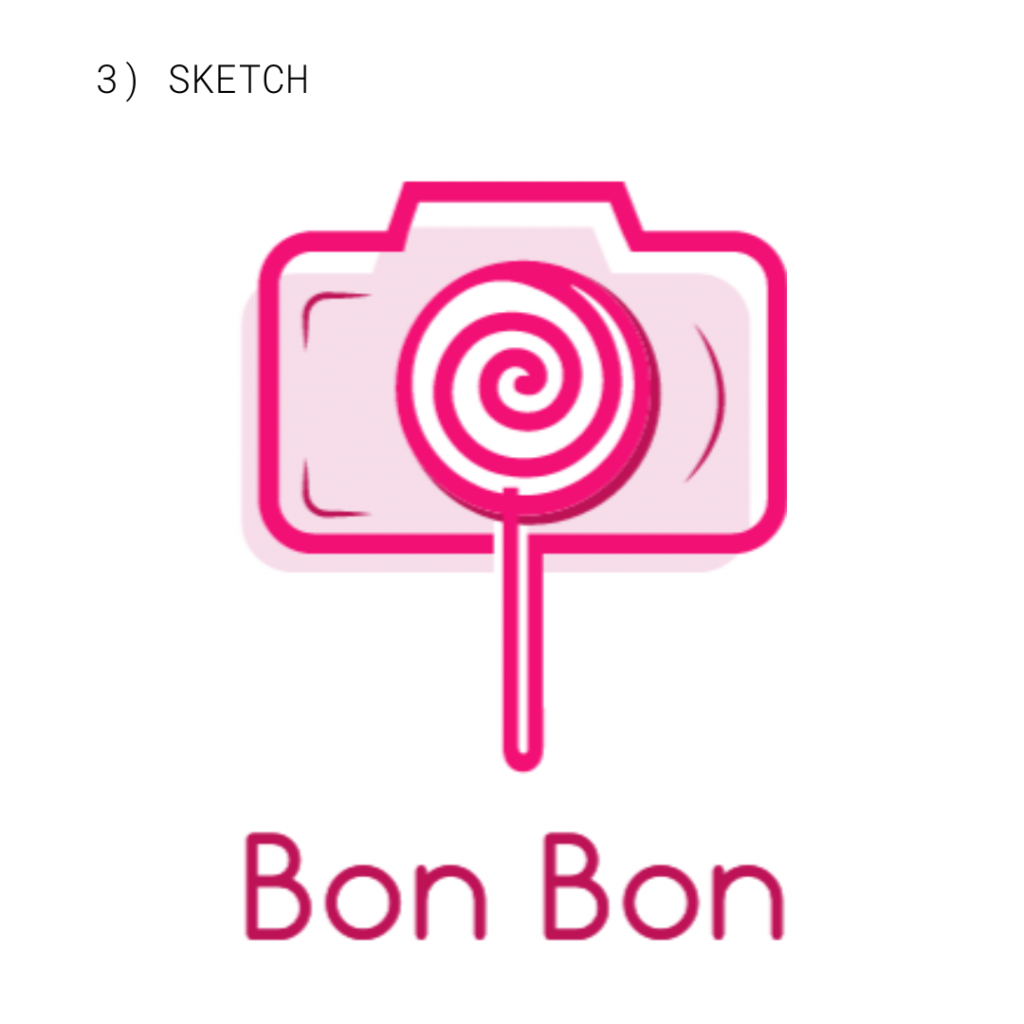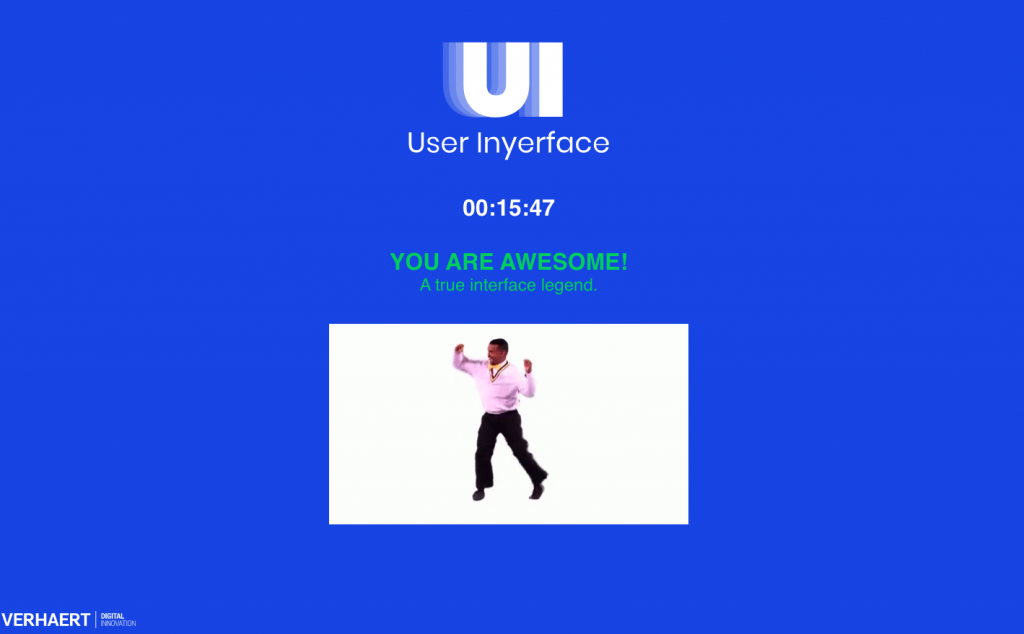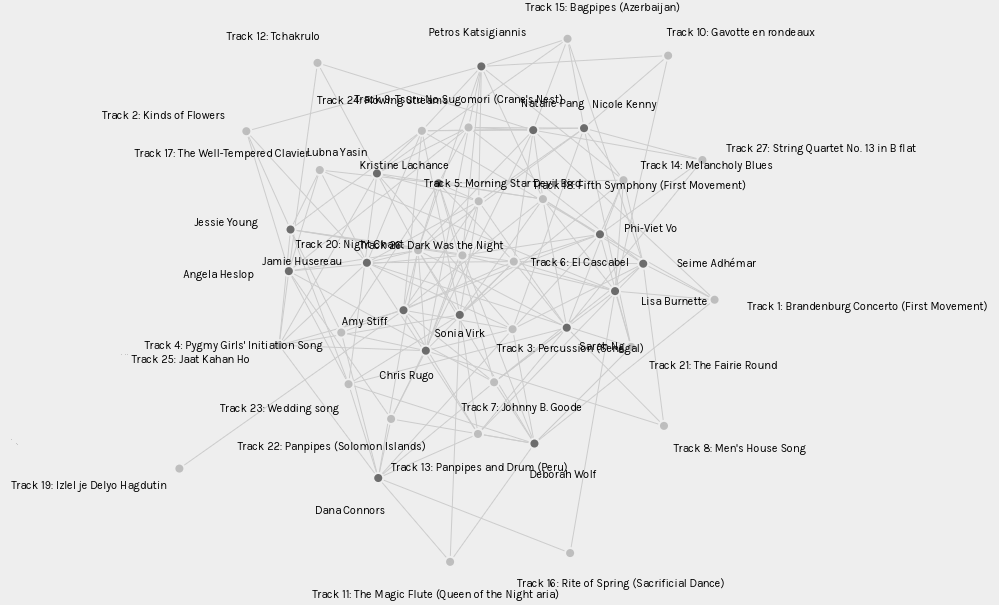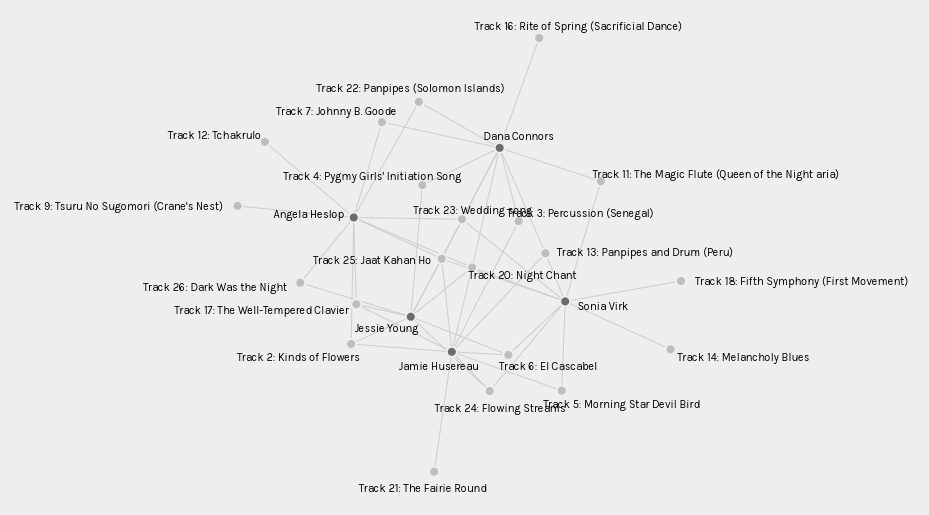






Manipulation of attention and responses
From the beginning of the task, I found it interesting the landing page was set up. The colour choices, the large “NO” button (which was not a button at all), and then the Please click HERE to GO to the next page where click is underlined (making me think this is what would have been linked to continue) but it was not. The pop-up on the next page reads “This site uses cookies, is that a problem for you?”… giving options of “Not really, no” and “Yes”. This design is a little devious and tricky for users with the wording and the use of a double negative (Brignull, 2011). The timer and movement between 1,2,3,4 made me a little anxious and the pop-up window of “Hurry time is ticking” with a strange close option was a little annoying but made me want to continue and go faster. The use of not in “I do not accept the Terms & Conditions” was interesting, so you had to deselect the check-marked box and it was very slow to scroll down on the link (this may be a good feature though as it may convince others to read if they HAVE to scroll slowly). I actually spent a very long time on this page, embarrassingly so, because I added my email incorrectly (although it did not prompt me to change it) and I did not figure out I had to change the “other” box to .com for my email. I was also getting an error message for “Your password is not unsafe” making me think I had to not follow the password requirements and make it unsafe.
The next page where we were asked to “Choose 3 interests” required we deselect them all first to then make our 3 selections. The following page was interesting as we had to first delete the “Placeholders” for each section to entire our information. The age button was a silly design as we had to pull it along and it could be somewhat finicky. The selection of our country and the use of flags rather than words were entertaining, to say the least. I was interested in the Help box in the lower right-hand corner so for curiosity’s sake I pressed the Help button and was given the response “Please wait, there are 477 people in line.” It was interesting how slowly this help box went away when send to bottom was selected. The next (and last) page was interesting as we had to “Select all images with glasses” which was all of the images…
Tufekci (2017) talks about this threat to freedom and dignity. I felt a little bit of this as I raced against this arbitrary timer with annoying reminders and lost a bit of dignity because I couldn’t figure out what I was missing to move on from page 1. I am left wondering about the idea presented by Harris (2017), of ethically steering people’s thoughts, and how they do not evolve randomly but rather in a specific direction. I know this simple task was racing for our attention and simply steering us to the next page to complete but it is a simple example of how we are drawn into these technologies (racing against a clock and providing personal information), how we are easily persuaded, and there was little to no transparency in the task (Harris, 2017).
References
Bagaar. (2019). User Inyerface. [web game].
Brignull, H. (2011). Dark patterns: Deception vs. honesty in UI design. A List Apart, 338.
Harris, T. (2017). How a handful of tech companies control billions of minds every day. [Video]. TED.
Tufekci, Z. (2017). We’re building a dystopia just to make people click on ads. [Video]. TED.
Check out Seime’s Task 8 here!
I chose to link with Seime for this task as we shared the least choices in common. As well, as I read my peers’ blogs, I felt Seime and I took very different approaches to this task so I thought it would be most interesting to compare our processes.
Seime’s choices seemed to come from a less methodical and more of a personal or aesthetic approach. He often makes connections between the musical pieces and his personal life, a song that he may listen to when he participates in or does something (ie. yard work, a trip, hiking, jogging, working out). He describes the emotions and feelings that the pieces evoke within him; mystery, peace, energy, focus, joy, achievement, reflection, inspiration, and thought-provoking.
He also made choices based on the popularity and interestingly the irreplaceability of a piece. I was less personable in my choices and more methodical in the origin or instruments used. We both made note of how El Cascabel made us want to dance and Senegal Percussion made us want to move. We also both chose the same piece from Bach (Brandenburg), I chose only one song from the list of classical composers and he chose three; one each from Bach, Beethoven, and Mozart.
Seime makes note that choices are all a matter of taste and personal preferences whereas my choices lay more within statistics of origin and instrument.
Check out Deborah’s Task 7 here!
Audio isn’t great. I’m no studio artist! She begins with. But, I have to disagree, this was absolutely incredible! What a fun and engaging way to approach this task.
Deborah chose to create a rap song about the items in her bag for this multimodal presentation of content. I appreciated how she included the quote from Gee (2005) about musical notation and its relationship to literacy. The idea of literacy is an important one to dissect, especially in my line of work in special education, so I appreciated how she included this particular note on what may make someone “literate”.
Deborah chose to use Youtube to create a musical piece with lyrics, whereas I chose to create a “radio show” (more similar to a podcast) on Soundtrap. The use of Youtube allowed for the lyrics to be visually represented/included along with the audio. This multimodality was appreciated as I could follow along with the lyrics (a feature that helps me understand or process information better). I chose to include a transcript for my podcast for similar reasons; accessibility as well as information processing.
The grander idea of literacy (or various forms) as she mentions from the New London Group is important to consider (prose literacy, numerical literacy, digital literacy, health literacy). It reminds me of a recent conversation I had with an educational psychologist about what is more important; reading and writing or understanding. This can be quite the point of contention especially when it comes to individualized education plans but brings light to the topic of literacy.
Check out Natalie’s Task 6 here!
I just had to pick this one to link with as it is one of my favourite shows as well. I knew it instantly when I saw the title, the one this that took me a second to recognize was how Natalie chose to approach this task. At first, I was wondering what episode she may be depicting, as I (maybe embarrassingly so) likely would have known the specific episode. Rather, she decided to introduce each of the main characters with emojis which I thought was absolutely brilliant and she did a wonderful (and entertaining) job of it.
We both enjoyed this task of representing a tv show or movie through the use of emojis. We both note the challenge we had with finding the appropriate emojis to encapsulate messages or loose connections of ideas of representations. We both started with the title for similar reasons, Natalie; emojis that I could use in my plot description that would make the entire story cohesive, and myself; specific emoji I wanted to use in the title as I use it throughout the rest of my emoji story (representation is made more obvious in the title). We both had to be a little creative and improvise to express our ideas and make appropriate visual representations for our viewers.
As mentioned previously, I found it interesting how she chose to introduce the main characters and then briefly represent the main idea or plot of the entire series. I think it would have been a nice addition to my emoji story if I introduced the characters at the beginning as well. I would have liked the challenge to decipher an episode of the tv show she chose (as nerdy as that sounds) just for the challenge! I enjoyed engaging with Natalie’s story and got to laugh along the way.
The Program

The Palladio program seemed a little overwhelming at first and I was not quite sure where to begin with this analysis of the visualizations. I played around with the count and dimensions for quite some time and settled on using what made the most (or any) sense to me based on the fractions in the selected targets and the visualization. I based my analysis using the count of “number of nodes” and added the dimensions of “modularity class, “target”, and “source” to analyze.
Modularity Class

The Palladio program set up 5 modularity classes for our section participants. This is where my comparisons will start. I was organized into modularity class 2, a group with Angela, Dana, Jessie, and Sonia. All 5 of us chose Track 20: The Night Chant and Track 25: Jaat Kahan Ho. If I move along to the other similarities I had with other group members; I shared Track 6: El Cascabel with Jessie and Sonia, Track 5: Morning Star Devil Bird with Sonia, Track 3: Percussion (Senegal) with Dana, Track 24: Flowing Stream with Jessie and Sonia, Track 13: Panpipes and Drum with Dana and Sonia, Track 17: The Well-Tempered Clavier with Angela and Jessie, and Track 2: Kinds of Flowers with Angela and Jessie. Track 21: The Fairie Round was not shared with any of my modularity class members.
All Sources
Now, if I compare my choices with the choices of the entire section, I find 14 out of 17 participants chose Track 20: The Night Chant, 11 chose Track 6: El Cascabel, 9 chose Track 5: Morning Star Devil Bird, 9 chose Track 3: Percussion (Senegal), 9 chose Track 24: Flowing Stream, 8 chose Track 25: Jaat Kahan Ho, 7 chose Track 13: Panpipes and Drum, 5 chose Track 21: The Fairie Round, 5 chose Track 17: The Well-Tempered Clavier, and 4 chose Track 2: Kinds of Flowers. This tells me that my choices are more mainstream than other choices, I chose none of the songs that indicated source ratios of 3 or fewer people from the class choosing it.
My Targets

If I select the visualization of my 10 targets (the 10 records I chose) I share something in common with every source (every participant), which isn’t surprising as 14 of us chose Track 20: The Night Chant. My target choices compared to each source is as follows; 4 shared with Angela, 5 shared with Chris, 4 shared with Dana, 4 shared with Deborah, 6 shared with Jessie, 4 shared with Kristine, 3 shared with Lisa, 5 shared with Lubna, 3 shared with Natalie, 5 shared with Nicole, 4 shared with Petros, 4 shared with Phi, 4 shared with Sarah, 3 shared with Seime, 6 shared with Sonia, 7 shared with Amy. This tells me I have the most in common with Amy and the least in common with Lisa, Natalie, and Seime. This also gives me a little insight into why I was in a modularity group with Jessie and Sonia, indicating that they must have had similarities with the other members (and so on and so forth) to be grouped in such classes.
Reasoning
The visualization creates communities of individuals with similar responses, as indicated by the modularity class, or by selecting visualizations with specific targets or sources to see the links and connections between participants and record selections. As for capturing the reasoning behind the choices that participants made for record selection, I only know my true reasoning as highlighted in task 8. The visualization gives no indication and does not reveal why participants made their choice or selection of various tracks. However, can my (or others’) choices (or non-choices) be interpreted (or misinterpreted) by this data?
Political Implications
If I were to step into a different mindset than the one that I approached this task with, I may be able to view this data through a more judgemental (maybe even pessimistic) lens to see if I can decipher choices that may be racially biased, gender imbalanced, xenophobic, and even religiously or politically discriminating based on geographical location and my knowledge of various countries. For example, did I exclude (and only 2 of 17 participants chose) Track 16: The Rite of Spring (Sacrificial Dance) because it was written by a Russian composer and I do not agree with “their” war on Ukraine? No, I didn’t, I genuinely did not like the song and chose to include others from Europe. Buuuuut, data may be interpreted this way, especially during such times of chaos and unrest. In the same vein, did I along with 13 other participants, chose Track 20: The Night Chant, a North American Indigenous record, because we believe in Truth and Reconciliation or the importance of Indigenous representation or celebrating those who have been stewards of our land for time immemorial? Maybe, or maybe we genuinely liked the song and the instruments, or both. Does this mean 3 participants do not believe in my previous statement? Likely not, buuuuut again, data can be misinterpreted in ways that may misrepresent us and our beliefs if improperly analyzed.
Final thoughts
My previous comments were not written to offend anyone but just trying to bring light to the implications of misinterpreting data, which can potentially happen even through simple tasks as we have just done. Misinterpreting data can lead to misrepresenting people. This could have grandiose effects. I think another interesting task would be to analyze the original record choices, I am sure we could misinterpret a lot through this as well; why are there 6 pieces included from North America and only 1 from Africa? Why does Bach have 3 pieces and Beethoven only 1? Why are the only pieces from South America both from Peru? There are many questions we can ask (or not ask), and many assumptions (and judgments) we can make when we analyze data without knowing the genuine intentions of selectors.
References
Music from Earth. (n.d.). NASA.
Palladio. (n.d). https://hdlab.stanford.edu/palladio-app/#/visualization
Check out Phi’s Task 5 here!
I loved how Phi included his three inspirations when creating his Twine; conversing with a bot, humour, and illusion of control. This last piece was particularly….
We shared the goal of trying to pull off humour in a text-based world, he mentions how they were lacking without audio support but I would have to disagree with him. There were multiple times I literally laughed out loud during his Twine, so I think he did a great job at embedding humour in this text game and agree that it can actually be more engaging for players.
We both really valued the game-based approach and although we both felt we could have done more with more time, we thought it was a fun opportunity to engage in such a creative task; incorporating our own ideas and being humorous. Phi’s game was the game that never ended, in all the witty, well-thought-out, wonderful ways. I loved that his game incorporated this idea of control (ie. I’ll choose this to mess with the system), acknowledging that the user is playing a Twine (and what that entails), and the loop of responses. He wrote the script as if you are in fact talking with someone on the other side (ChatGPT), and makes the user really feel this human connection (ie. if you could only hear my voice or see my face). The addition of not being able to say goodbye is not only humorous but a well-planned feature.
I was very impressed with how the game was organized, and how the various responses looped in with previous ones but still made sense or added new text. I thought it was very well planned to pull off as successfully as he did!
The Process
I was quite methodical in my approach to my choices. I started by recording which country and continent each piece of music came from. This was one of my main factors in choosing songs that truly represented the people on planet Earth, as Kurt Waldheim highlighted as the intention of this curation, in the podcast. The purpose was to properly introduce humanity and to collect musical pieces from all around the world so this is what mainly drove my decision-making process. To add, it was stated that one piece represented each “thing” therefore, musical instruments factored into my decision as well; if I had already chosen a song with panpipes or percussion I likely chose a different instrument from the same continent. I still had the two goals at the forefront of my process as well; try to be inclusive as possible and make a good record.
The Music
Australia, Aborigine songs, “Morning Star” and “Devil Bird,” recorded by Sandra LeBrun Holmes. 1:26
This song is one of three from Oceania, which is described as a continent in some regions, this is new to me. At first, I immediately chose this song as it was the only song from the continent of Australia (as I previously knew it) and upon further investigation, I chose to keep it as I appreciated how it is actually two Aborigine songs with one of the most interesting instruments, the didgeridoo. I also liked the dichotomy of bright and dark of the two songs, as well as the representation of the Indigenous peoples of Australia with their voices.
Navajo Indians, Night Chant, recorded by Willard Rhodes. 0:57
This song is one of five possible choices from North America. I chose this one in particular as I think it is important to include Indigenous culture and is in a way one of the closest related to Canadian Indigenous culture. I read that it is a song about healing and restoring culture, a message that I appreciate and admire. This song felt very light with the shaker instruments and the high pitch voices.
Peru, panpipes and drum, collected by Casa de la Cultura, Lima. 0:52
This song is one of two possible choices from South America, based on my list I only chose one song from South America. This is because both songs on the record are from Peru and I thought my narrowing list should not favour two songs from the same country. As I listened and compared the two songs I appreciated the instruments, the panpipes and the drums, over the other song. For some reason, this song reminded me of Peter Pan, and I liked its intensity and mysteriousness with the panpipes and drums.
India, raga, “Jaat Kahan Ho,” sung by Surshri Kesar Bai Kerkar. 3:30
This song is one of eight possible from Asia, depending on how you categorize various countries that may belong to multiple continents, and I only found it fitting to include a song from the most populous place on the planet, as it (in a way) represents the culture of the most amount of people (loosely speaking). I found this song hauntingly beautiful and only fitting for interstellar travel as the title is Where are you going alone, girl?
Holborne, Paueans, Galliards, Almains and Other Short Aeirs, “The Fairie Round,” performed by David Munrow and the Early Music Consort of London. 1:17
This song is one of ten possible from Europe, again depending on categorization. As the UK was historically one of the most influential countries in the world, especially to Canada (ie. British monarch), I thought it fitting to include it. I also think the use of the recorder is too good to pass up, as the recorder was a staple of my middle school music experience. It is a very light and airy song, it made me feel joy and happiness as I listened to it. I could picture dances and courtship as I listened to the high notes and bright melody.
Mexico, “El Cascabel,” performed by Lorenzo Barcelata and the Mariachi México. 3:14
This song is the second chosen of five possible choices from North America. I had already chosen a song from the USA, so I wanted to diversify and bring in the fun and exciting sounds of Latino music. I read that music in Spanish may be the second most consumed music in the world which is a noteworthy statistic. The fast rhythm and mariachi band beats made me want to dance, it sounded like something very exciting was happening throughout this song of The Little Bell.
China, ch’in, “Flowing Streams,” performed by Kuan P’ing-hu. 7:37
This song is the second chosen of eight possible from Asia. Similarly to the song from India, I chose a song from China as not only is it the second most populous country in the world but is also (sometimes frighteningly) influential and powerful on an international scale. Although, I do love the sentiment of ever-moving water and the intriguing introduction of plucking strings drew me further into the song. There were ebbs and flows of the harder and lighter plucking of the strings, just as a river would act.
Bach, The Well-Tempered Clavier, Book 2, Prelude and Fugue in C, No.1. Glenn Gould, piano. 4:48
This song is the second chosen of ten possible from Europe. It only made sense to me to choose at least one song from Bach as there were three on the record. I debated between Bach and Beethoven, as people would argue Beethoven is better, however, statistically speaking this choice sat better. I also found it interesting the conversations that revolved around the mathematical concepts of these pieces included from Bach and Beethoven. This particular Bach song was chosen because the instrument was the piano, something that the other songs did not include.
Java, court gamelan, “Kinds of Flowers,” recorded by Robert Brown. 4:43
This song is the second chosen of three from Oceania. I enjoyed the various percussive instruments and I read that it is a traditional ensemble of various peoples of Indonesia, and therefore a more diverse representation of people. There was a lot going on right from the beginning of this piece and the interesting addition of the various voices overlapping was intriguing and beautiful, it made me sway back and forth with the carried notes.
Senegal, percussion, recorded by Charles Duvelle. 2:08
This song is the only song from Africa on the list, and therefore should absolutely be on the record. The other record that may be included for Africa is Pygmy Girls, however, from what I could find, it was a British American who recorded it so I shied away from this choice. The drums at the very beginning made me want to shake my hips, I pictured people in regalia and traditional dances when I closed my eyes and listened.
A burning need to share my runner-ups;
“Johnny B. Goode,” written and performed by Chuck Berry. 2:38
I read this piece was a little controversial as rock music was deemed adolescent to which the reply was there are many adolescents on the planet. Love it!
Beethoven, Fifth Symphony, First Movement, the Philharmonia Orchestra, Otto Klemperer, conductor. 7:20
Classic. Classic. Classic. Duh duh duh duuuuum.
References
Taylor, D. (Host). (2019, April). Voyager golden record. [Audio podcast episode]. In Twenty thousand hertz. Defacto Sound.